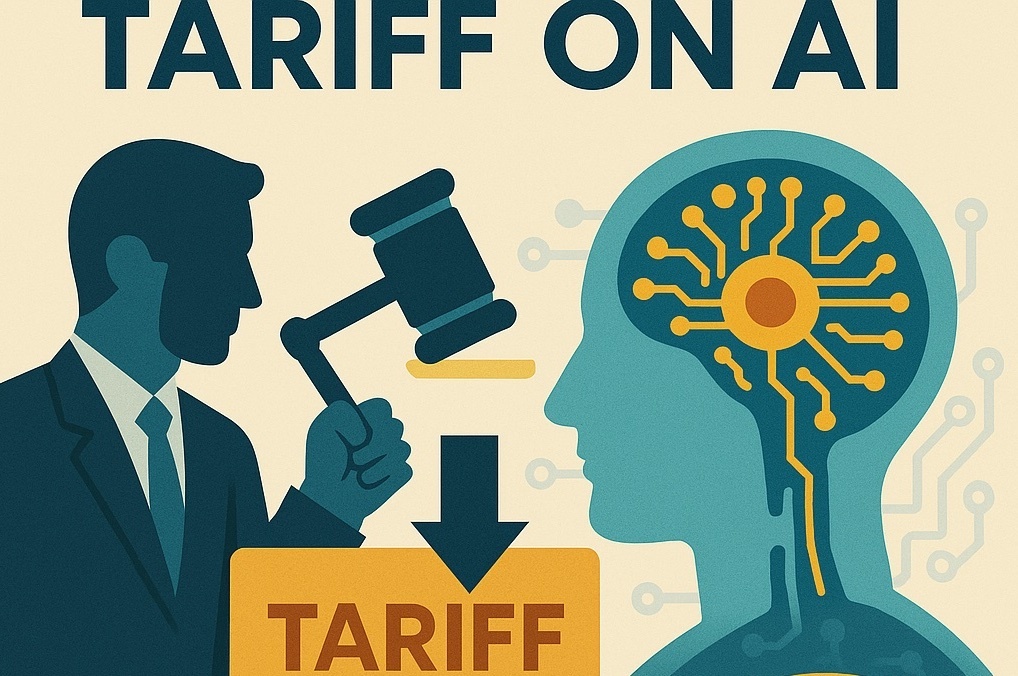The AI tariff?
09 April 2025 Michael J. Black 3 minute read
The societies that will "win" the AI race will not be those that develop the technology first. It will be those that are best able to manage the long-term social disruption AI will cause.

The argument for putting high tariffs on China is that they produce goods at low prices, US companies can't compete, and this kills jobs in the USA. Tariffs increase the price of goods from China, making manufacturing of these goods in the US more competitive. This provides jobs for Americans and jobs are important because they provide social stability.
In a nutshell, China wants to give us stuff cheaply and we say "no" to this because we want to preserve social stability by preserving jobs.
Now consider what's coming with AI. Think of AI like it's China. AI will give us goods and services at lower prices than they can be made by, or provided by, humans. This will reduce the competitiveness of existing businesses and will put people out of work. In turn, this will lead to social disruption.
If you agree that the "AI problem" is similar to the "China problem", then the logical approach to dealing with AI is to apply a regulatory or economic model that will put the brakes on it. You could tariff AI by putting a tax on any AI service so that it costs as much as having a human provide the same service. Or you could regulate it in some way to make human labor competitive with AI labor.
Is this going to happen? In the US, I see no chance that there will be a tariff on AI. AI is seen as a productivity enhancer that makes businesses more competitive. It will reduce the cost of producing goods so that the US can produce those goods as cheaply as China.
Many people argue that tariffs on China help bring jobs to the US (while reducing the price of goods) but, at the same time, argue that AI is valuable because it reduces the price of goods (while reducing jobs). We can't have it both ways, You can have an "entity" (China or AI) that produces goods and services cheaply and cuts jobs or you can put the brakes on that "entity" and have jobs with higher prices.
If the goal of putting tariffs on Chinese goods (and/or services) is to create jobs in the US, then what is the plan for the jobs lost to AI?
Many people see the development of AI as a race and whoever develops a super-intelligence first will "win". I see it differently. I've argued that AI will be a commodity and we'll all have it. Getting there first isn't what will give a country a competitive advantage. It's how the society deals with the inevitable social disruption caused by AI that will determine its success.
China and Europe have the long-term edge in the AI race, not because they will develop it first or best, but because they are better positioned than the US to adapt to the changes that it will bring. China's primary aim is stability while Europe has a well-established model for wealth distribution. These systems are buttresses against the shocks of social dislocation AI may cause.
AI will require societies to make significant changes to how they think about work, pay, and how people are motivated to participate in society. If work goes away for many, what replaces the sense of purpose and belonging it often confers?
The real risk is not AI but the joblessness and the social disruption it will cause. Note that I am not arguing for a tariff on AI. I am just pointing out that addressing joblessness needs a more wholistic approach because there are many causes of joblessness. The US focus on the individual above all else, puts US stability at risk in an AI world.
The Perceiving Systems Department is a leading Computer Vision group in Germany.
We are part of the Max Planck Institute for Intelligent Systems in Tübingen — the heart of Cyber Valley.
We use Machine Learning to train computers to recover human behavior in fine detail, including face and hand movement. We also recover the 3D structure of the world, its motion, and the objects in it to understand how humans interact with 3D scenes.
By capturing human motion, and modeling behavior, we contibute realistic avatars to Computer Graphics.
To have an impact beyond academia we develop applications in medicine and psychology, spin off companies, and license technology. We make most of our code and data available to the research community.
